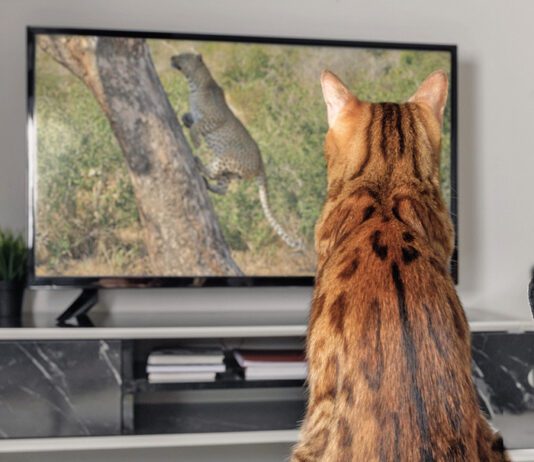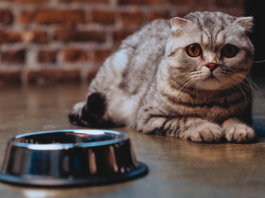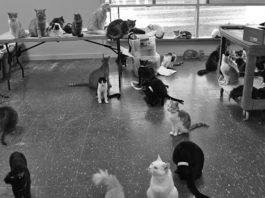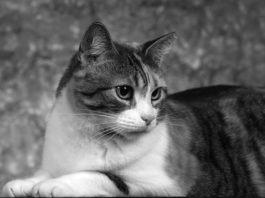How Outwit Your Wily Escape Artist
You open the door for an unexpected visitor and your cat flees. Its frustrating for you, potentially dangerous for your escape artist - and a possible sign that its time to add stimulation to his daily life.Cats adopted from a shelter may have been free roaming, with wide territories to explore, play and hide in. Now theyre confined at home to keep them safe from speeding cars and potential fights with stray cats and wildlife that can maim or kill, says Tracy Kroll, DVM, an animal behaviorist in Fair Lawn, N.J.
Ask Elizabeth: November 2014
Q. Our year-old male cat, found at a county animal shelter seven months ago, has been diagnosed with eosinophilic granuloma complex (EGC). His symptoms are incessant scratching, puffy gums, blistering mouth, swollen front paw, lameness, limping. Our veterinarian has prescribed steroids for him, and these have been somewhat helpful, but can you explain this disease so that we can better understand what is going on? …
Whats Your Cats Age in Human Years?
If there were an AARP for pets, your cat would get his membership card when he turns 8. Thats about 50 years old in human years, according to Feline Life Stage Guidelines from the American Association of Feline Practitioners and American Animal Hospital Association.
A Single Gene Keeps Mice Away From Cats
A specific gene affecting a mouse’s sense of smell helps it avoid predatory cats, according to research at Northwestern University. Neurobiologist Thomas Bozza, Ph.D., and his team found that removing an olfactory receptor responsible for detecting certain odors can impact a mouse’s survival. The gene, TAAR4, controls production of a receptor that detects a substance concentrated in carnivores’ urine. Usually, mice avoid the scent marks of predators, but those lacking the TAAR4 gene do not — and can end up as prey.
The Year-Round Threat of Ticks
Ticks pose a year-round threat to cats in every state — even if yours spends virtually all his time indoors. These minute arachnids have survived for millennia and often go undetected as they feed on their host’s blood, often causing serious illness and even death. “The major problem with ticks is that they are vectors for various infectious agents,” says dermatologist William H. Miller, VMD, at the Cornell University College of Veterinary Medicine.
Singles Turn to Pets for a Sense of Family
An intriguing trend has developed among singles in the U.S. Single people — men particularly — are becoming pet owners at rates greater than families. They’re “turning to pets for love and a sense of family,” according to a survey by the American Veterinary Medical Association. In a five-year period, pet ownership among the never married, widowed and divorced grew 16.6 percent. Excluding people who never married, growth in pet ownership among singles rose 17.7 percent during this same period.
An Unmistakable Sign of Anal Problems: Scooting
Scent is one of the ways cats communicate, and their anal glands help in that effort. The pea-sized glands, or sacs, produce an odor that aids in establishing identity and territory. When a cat defecates, the scent glands empty through two ducts located at the 4 o’clock and 8 o’clock positions of the anal sphincter, the band of muscle encircling the anus.
Ask Elizabeth: July 2013
I completely understand your thoughts on this matter, as recent developments have caused many owners (and cats … believe it or not!) to reconsider their habits and the effects that their lifestyle may have on native populations. The recent study suggesting that domestic cats are contributing to the demise of billions of birds and small mammals points out the fact that the interaction of domestic species with native wildlife is an important issue, one that requires careful thought and action.
When a Sudden Disaster Strikes
Disaster preparedness isn’t only for earthquakes and hurricanes. It’s also vital for everyday occurrences, such as an extended power outage or sudden wildfire racing over the hill. Every 23 seconds, a fire department rushes to a fire somewhere in the U.S., according to the National Fire Protection Association. Are you ready?
The Biggest Mistake in Giving Treats
Treats provide welcome rewards for good behavior, but their overly generous use can contribute to obesity. One reason is that owners don’t count treats as calories. “But the bigger problem is a multiple-person household in which every time someone walks by, they give the cat a treat,” says Joseph Wakshlag, DVM, Ph.D., Associate Professor of Nutrition at the Cornell University College of Veterinary Medicine.
Slowing Feline Cognitive Decline
Advances in veterinary medicine are keeping our cats alive longer, giving us precious extra years to spend with them. Sadly, extended life-spans also bring geriatric disorders such as feline cognitive dysfunction (FCD), similar to human Alzheimer’s in its symptoms. Like Alzheimer’s, FCD has no cure. And far fewer studies have been done on the feline version of the disease than have been done on the canine variety, so there are no approved medical treatments. But antioxidant supplements, along with mental and physical exercise, often improve the quality of life for both owners and cats.
Indoor Cats Can Get Heartworm Disease
The American Heartworm Society and American Association of Feline Practitioners have partnered to educate pet owners and veterinary professionals about the need to protect cats from heartworm disease. One misconception that they would like to correct is that indoor cats aren’t at risk for heartworm disease. In fact, one retrospective study found that 25 percent of the cats diagnosed with the disease were indoor cats. The reason: mosquitoes, which transmit the disease, can get indoors.
















